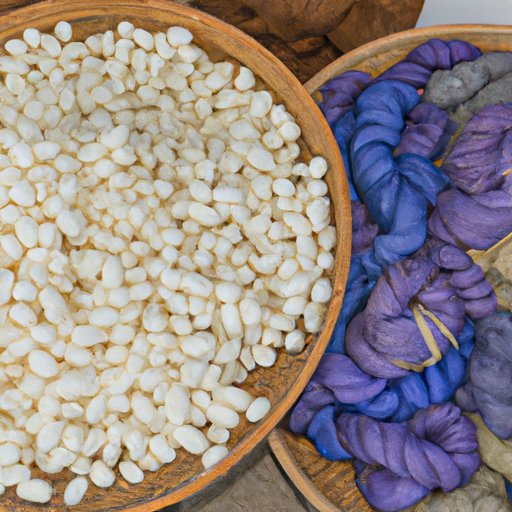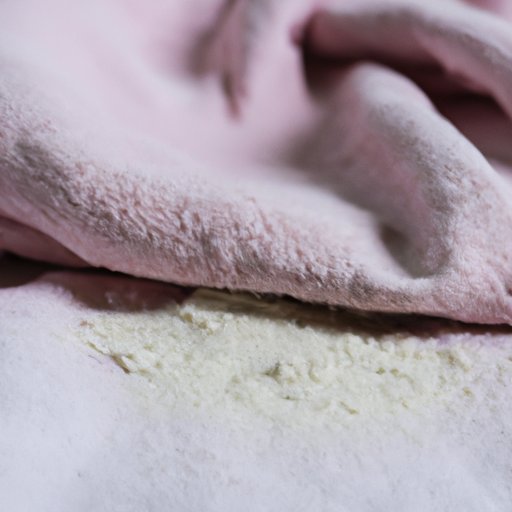
Introduction
Silk is a beloved garment material that is often associated with luxury and elegance. From scarves to dresses, silk garments can be found in many people’s wardrobes, making it important to know how to properly care for them. While it may seem daunting, taking care of silk fabric can be achieved through proper techniques and attention to detail. In this article, we will provide a comprehensive guide on how to wash silk, tailored to fit any individual’s needs pertinent to silk garments.
The Ultimate Guide to Washing Silk: Tips and Tricks for a Flawless Clean
One of the most important aspects of washing silk is following care labels. This is the best way to ensure that you avoid damaging the garment. When it comes to washing silk, hand-washing is the recommended method. This is because silk is a delicate fabric and can become easily damaged when subjected to the rough treatment of a washing machine.
Hand-washing silk may sound intimidating, but it’s actually quite simple. Fill up a clean basin with cool water and add a small amount of gentle laundry detergent. Then, turn the garment inside out and submerge it in the water, gently swirling it around for a few minutes. Rinse the garment with cool water and gently press out the excess water. Avoid wringing out the silk, as it can cause damage to the garment.
When it comes to detergent, it’s important to use a gentle one that is specifically formulated for delicate fabrics like silk. Avoid using chlorine bleach and any products that contain enzymes or brighteners. These can damage the fibers and ruin the quality of the silk.
It’s also important to avoid harsh chemicals when washing silk. This means steering clear of bleach and fabric softeners. Bleach can damage the fibers and cause discoloration, while fabric softeners can build up on the fabric and cause it to lose its softness.
Silk 101: Cleaning Your Delicate Fabric
A simple and effective way to clean silk at home is to hand-wash it using a gentle detergent and cool water. Fill a basin or sink with cool water and add a tiny amount of mild detergent. Swirl the garment around in the water and then rinse thoroughly with cool water. To dry, gently lay the garment flat on a clean towel and press out any excess water. Refrain from wringing out the silk garment as it can cause damage.
It’s important to spot-test silk prior to washing the entire garment. To do this, lightly dampen a small, inconspicuous area of the garment and add a small amount of detergent. Let the area sit for 10-15 minutes and then rinse with cool water. If there is no color fading, bleeding, or other damage, it’s safe to proceed with washing the whole garment.
Washing Silk: Expert Advice from the Pros
Expert advice can go a long way in understanding how to properly care for your silk garments. We spoke to professional laundry services and fashion designers who specialize in silk fabrics to get their best advice on washing silk.
One common myth about washing silk is that it cannot be washed with water. Silk can and should be washed with water; however, it’s important to avoid using hot water, as it can cause damage to the fabric. Cool water is the best option for washing silk.
Another myth is that silk should only be dry cleaned. While dry cleaning can be an option, it’s not always necessary. If the care label states that the garment can be washed, it’s safe to do so following the recommended steps.
DIY Silk Cleaning: Natural Remedies to Keep Your Fabric Looking Luxurious
For those who want to avoid commercial laundry detergents, there are natural and eco-friendly alternatives that can be used to clean silk. One option is to use white vinegar, which can help to break down any buildup on the fabric. Add a half-cup of white vinegar to a basin of cool water and soak the garment for 10-15 minutes. Then, rinse with cool water and lay the garment flat to dry.
Another natural option is baking soda, which can help to remove odors and stains from silk. Mix a small amount of baking soda with a tablespoon of water to form a paste. Apply the paste to stained areas of the garment and let it sit for 10-15 minutes. Rinse with cool water and lay the garment flat to dry.
Silk Care: Preventing Stains and Damage
Preventative measures can go a long way in ensuring that silk remains in good condition. Storage and handling are two important factors to consider when it comes to silk care. Silk should be stored in a cool, dry place, with ample space to avoid any creasing or crushing of the garment.
When wearing silk, it’s important to avoid perfumes, oils, and other substances that can leave stains. If a stain does occur, it’s important to address it as soon as possible. Oil-based stains can be cleaned with cornstarch by sprinkling a small amount directly on the stain and letting it sit for a few minutes. After that, brush the cornstarch off and rinse with cool water.

Washing Silk: Common Mistakes to Avoid
When washing silk, there are several mistakes that people often make that can damage the fabric. One of the most common mistakes is using hot water. Hot water can weaken the fibers of the silk and cause it to shrink or become distorted. It’s important to stick with cool water when washing silk.
Another common mistake is using harsh chemicals such as bleach or fabric softeners. These chemicals can damage the delicate fibers of the silk and cause it to lose its luster and quality. It’s important to avoid these chemicals at all times when caring for silk.
Conclusion
Washing silk can seem daunting, but with the right knowledge and technique, it’s easy to achieve a flawless clean. Hand-washing with a gentle, silk-specific detergent and cool water is the best way to avoid damaging the delicate fibers. Avoiding common mistakes and being mindful of preventative measures can help to keep your silk looking luxurious for years to come. We hope that this article has provided valuable insights into properly caring for silk, so you can feel confident that your garments will look their best.




